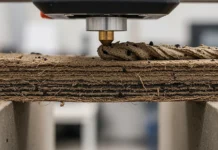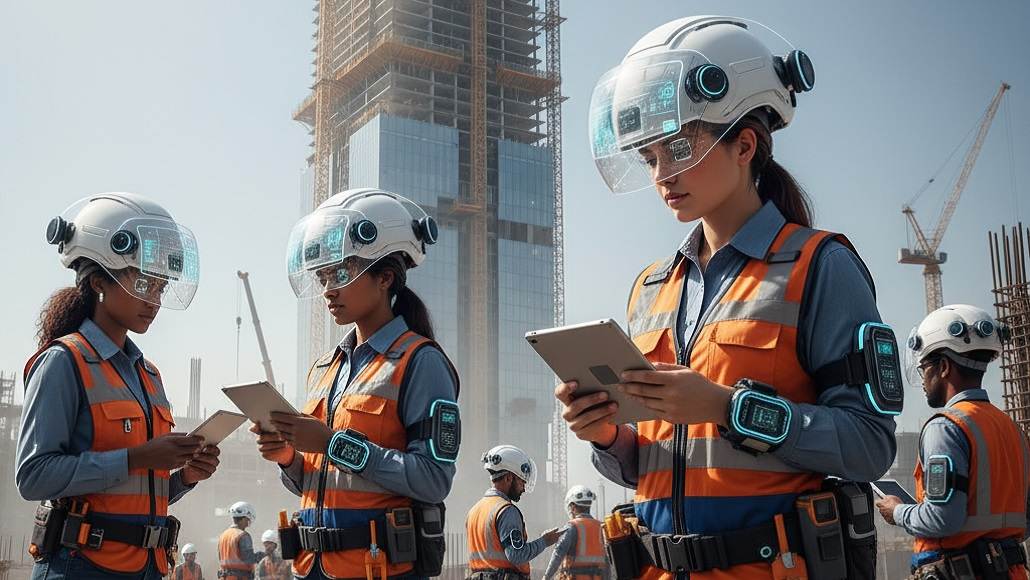Smart Wearables Enhancing Construction Site Safety
Construction sites represent some of the most hazardous work environments across all industries, with accident rates consistently exceeding those found in manufacturing, healthcare, and service sectors. Traditional safety approaches, while foundational to protecting construction workers, often rely on reactive measures, periodic inspections, and human observation systems that cannot provide comprehensive coverage of dynamic, rapidly changing construction environments. Smart wearables in construction safety represent a revolutionary approach that transforms worker protection through continuous monitoring, predictive analytics, and real-time intervention capabilities that address safety hazards before they result in accidents or injuries.
The integration of advanced sensor technologies, wireless communication systems, and artificial intelligence algorithms into wearable devices creates comprehensive safety monitoring networks that provide unprecedented visibility into worker activities, environmental conditions, and potential hazard exposures. These systems generate continuous streams of safety-relevant data that enable proactive risk management while providing immediate alerts when dangerous conditions or behaviors are detected.
Modern construction projects increasingly demand safety performance levels that traditional approaches cannot achieve within acceptable cost and complexity parameters. Smart wearable technologies address these demands by providing automated safety monitoring capabilities that complement human oversight while dramatically expanding the scope and effectiveness of safety management programs across diverse construction applications.
Revolutionary Construction Safety Technology
Advanced construction safety technologies encompass multiple sensing modalities, communication protocols, and analytical capabilities that create comprehensive worker protection systems. Environmental monitoring sensors continuously track temperature, humidity, air quality, noise levels, and chemical exposures that could threaten worker health and safety throughout construction activities.
Motion detection systems utilize accelerometers, gyroscopes, and magnetometers to monitor worker movements, detect falls, identify ergonomic risk factors, and assess fatigue levels that could compromise safety performance. These systems can distinguish between normal work activities and dangerous situations while providing early warning of developing safety concerns.
Location tracking technologies including GPS, ultra-wideband positioning, and Bluetooth beacons enable precise monitoring of worker locations relative to equipment, excavations, and hazardous materials. Geofencing capabilities can automatically alert workers when they approach dangerous areas while providing supervisors with real-time visibility into workforce distribution and potential exposure scenarios.
Physiological monitoring sensors track heart rate, body temperature, respiratory patterns, and stress indicators that can reveal health problems, fatigue, or environmental exposures before they result in accidents. These biometric systems provide objective measures of worker condition that supplement subjective self-assessment approaches.
Advanced IoT Wearables Implementation
Internet of Things integration creates interconnected safety ecosystems where wearable devices communicate with construction equipment, environmental sensors, and central monitoring systems to provide comprehensive situational awareness. Mesh networking technologies enable reliable communication even in challenging construction environments where traditional wireless infrastructure may be unavailable or unreliable.
Edge computing capabilities embedded in wearable devices enable real-time data processing and decision-making without dependence on cloud connectivity. These systems can provide immediate safety alerts and protective responses even when network connections are intermittent or compromised, ensuring continuous protection regardless of communication infrastructure status.
Battery optimization technologies extend wearable device operating life while maintaining full functionality throughout extended work shifts. Advanced power management systems, energy harvesting capabilities, and rapid charging technologies ensure that safety monitoring remains active throughout entire construction projects without creating additional burden for workers.
Data synchronization systems coordinate information between multiple wearable devices, equipment sensors, and central monitoring platforms to create unified safety dashboards that provide comprehensive visibility into project safety status. These systems ensure that safety information is available to supervisors, safety officers, and emergency responders when needed.
Safety Technology Innovation and Applications
Predictive analytics algorithms analyze patterns in sensor data, environmental conditions, and historical accident data to identify emerging safety risks before accidents occur. Machine learning systems can recognize precursor conditions that typically lead to accidents, enabling proactive interventions that prevent injuries rather than simply responding to them after they happen.
Augmented reality integration overlays safety information, hazard warnings, and procedural guidance directly onto worker field of view through smart glasses or helmet-mounted displays. These systems can highlight dangerous areas, provide step-by-step safety procedures, and deliver real-time guidance that improves safety compliance while reducing training requirements.
Voice recognition and natural language processing enable hands-free interaction with safety systems, allowing workers to report hazards, request assistance, or access safety information without interrupting work activities. These systems can understand construction-specific terminology and respond appropriately to emergency situations.
Integration with construction equipment creates safety interlock systems that can prevent equipment operation when workers are in dangerous proximity. These systems can automatically stop or restrict equipment movement when wearable devices indicate that workers are in potential conflict zones, preventing struck-by accidents that represent leading causes of construction fatalities.
Worker Monitoring and Health Management
Comprehensive worker health monitoring extends beyond immediate safety concerns to encompass long-term health preservation through exposure tracking, ergonomic assessment, and wellness monitoring. Cumulative exposure tracking for noise, vibration, chemicals, and other occupational hazards enables proactive health protection while supporting regulatory compliance and workers’ compensation management.
Ergonomic monitoring systems analyze work postures, repetitive motions, and lifting activities to identify activities that could result in musculoskeletal injuries over time. These systems can provide real-time feedback to workers about proper techniques while alerting supervisors to work patterns that may require task modification or rotation.
Fatigue assessment algorithms utilize physiological indicators, activity patterns, and environmental factors to evaluate worker alertness and cognitive performance throughout work shifts. These systems can recommend rest breaks, task reassignments, or schedule modifications to prevent fatigue-related accidents.
Health trend analysis identifies gradual changes in worker physiological parameters that may indicate developing health problems or increasing injury susceptibility. Early identification of these trends enables proactive intervention through medical evaluation, work modification, or additional training to prevent more serious problems.
Digital Construction Safety Management
Digital safety management platforms integrate data from wearable devices with project management systems, regulatory requirements, and safety training records to create comprehensive safety oversight capabilities. These systems automate safety reporting, track safety performance metrics, and identify opportunities for safety program improvement.
Incident analysis capabilities utilize data from wearable devices to reconstruct accident sequences, identify contributing factors, and develop prevention strategies that address root causes rather than symptoms. High-resolution sensor data can provide objective evidence that supports accurate incident investigation and effective corrective action development.
Regulatory compliance automation ensures that safety monitoring and reporting meet applicable regulatory requirements while minimizing administrative burden. These systems can generate required documentation, track training compliance, and provide audit trails that demonstrate safety program effectiveness.
Performance benchmarking compares safety metrics across projects, contractors, and industry standards to identify best practices and opportunities for improvement. Statistical analysis of safety data can reveal patterns and trends that inform safety strategy development and resource allocation decisions.
Emergency Response and Communication Systems
Emergency response integration connects wearable safety systems with first aid providers, emergency services, and medical facilities to ensure rapid response when accidents occur. Automatic emergency detection can initiate response procedures without requiring conscious action from injured workers, reducing response times in critical situations.
Location services provide precise positioning information to emergency responders while automated systems can guide rescue personnel to accident locations quickly and efficiently. Indoor positioning systems work effectively in complex construction environments where GPS signals may be blocked or unreliable.
Communication systems maintain contact between isolated workers and supervisors through check-in protocols, panic buttons, and automatic monitoring systems that detect extended periods of inactivity. These systems are particularly important for workers in confined spaces, remote areas, or hazardous environments where immediate assistance may not be readily available.
Medical information integration provides emergency responders with access to worker medical history, medication information, and emergency contacts that can be crucial for providing appropriate treatment quickly. Secure access protocols ensure that sensitive medical information is available when needed while protecting privacy under normal circumstances.
Economic Benefits and Implementation Strategies
Economic analysis demonstrates that smart wearable technologies provide substantial return on investment through reduced insurance costs, improved productivity, and decreased accident-related expenses. Workers’ compensation savings alone often justify technology investments while additional benefits from improved productivity and reduced downtime provide additional economic advantages.
Implementation strategies require careful planning that addresses technology selection, worker training, data management, and integration with existing safety programs. Phased deployment approaches can minimize disruption while allowing organizations to learn and adapt implementation strategies based on early experience.
Change management processes help workers and supervisors adapt to new technologies while maintaining safety culture and engagement. Training programs must address both technical aspects of wearable devices and the broader safety management concepts that these technologies support.
Vendor selection and technology evaluation require comprehensive assessment of device capabilities, reliability, support services, and integration requirements. Long-term partnerships with technology providers can ensure ongoing support and continuous improvement of safety systems.
Conclusion
Smart wearables represent a transformative approach to construction site safety that enables proactive risk management, comprehensive worker monitoring, and data-driven safety improvement strategies. Through advanced sensor technologies, intelligent analytics, and seamless integration with construction operations, these systems provide protection capabilities that far exceed traditional safety approaches while supporting regulatory compliance and economic objectives.
The successful implementation of smart wearable safety systems requires commitment from leadership, engagement from workers, and integration with comprehensive safety management strategies. As these technologies continue evolving and demonstrating their effectiveness, their adoption will accelerate across the construction industry while contributing to significant improvements in worker safety and health outcomes.
The future of construction safety lies in intelligent systems that continuously monitor, analyze, and respond to safety conditions while empowering workers with information and tools needed to work safely and efficiently. Smart wearable technologies will play increasingly important roles in achieving zero-accident goals while supporting the construction industry’s continued growth and development.































